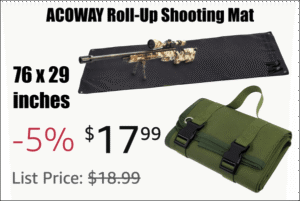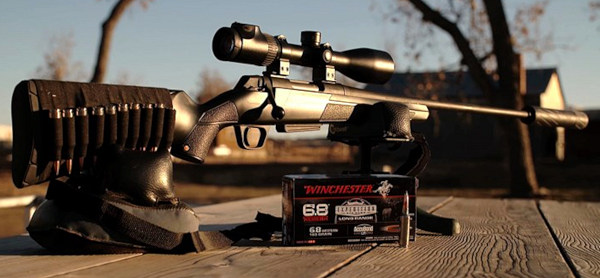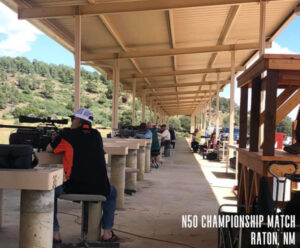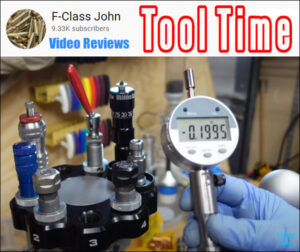September 30th 2023Saturday movies: Load Development For Hunting Rifles and MOREKeith is a competitive shooter who has placed second in the F-Class National Championships multiple times. Keith Glasscock is a wind coach and runs the popular Winning in the Wind YouTube Channel. Keith is also interested in varmint hunting and game hunting. It’s hunting time, so we show you two videos Keith made about hand-loading hunting rifles. Hand-loading ammo accurately for hunting and varmint guns may require different procedures than load testing a match rifle. In order to be efficient and accurate, you should use the same brass and bullets that you will be using during the hunt. Keith shows in two videos how he developed accurate loads for both a.223 Rem hunting rifle and a Remington 700 bolt action varmint gun chambered in the.223 Remington. Keith begins by full-length sizing brass. He then experimented with powder weights and came up a promising load consisting of 24.7 grains Alliant AR comp with Hornady A-Max 50gr bullets. Keith then experimented with the seating depths (see 5:50-6:100), and found that accuracy increased as he changed OAL in.005 increments. Keith ended up with a 2.270? With a 3-shot groups in the twos! This video demonstrates the importance of testing bullets at different seating depths. Keith shoots the rig off a bipod while prone, which is very similar to how he shoots in the varmint field. Keith explains the key factors to be considered when optimizing a varmint rifle with.223 Rem. LabRadar is used to measure velocity. Load Development for the.308 Winchester Hunting RifleIn another video, Keith demonstrates how to develop loads for a.308 Winchester hunter rifle. Keith uses a large X type sandbag as a front support. He was again using a Remington 700 bolt action rifle, but this time Barnes TSX solid-copper bullets. Federal 210m primers and AR Comp powder were used. Keith said that Barnes bullets are excellent. He commented that these bullets are “match quality” in terms of accuracy. Keith was able to achieve very small groups of three shots with the AR Comp and TSX projectiles. Keith did notice that the point of impact shifted significantly up with increasing charge weight (see 6 :20-7 :10). This is not surprising with hunting barrels that have thinner contours. It is important to monitor the POI changes during load development. You may need adjust your zero once you have completed testing. Three Bonus Videos for Huntresses and HuntersHere are some videos that offer useful tips and techniques to hunters and huntresses. The videos cover rifle marksmanship and optics selection for deer hunts, as well as efficient methods for sighting in hunting rifles. How to Shoot Better With a Hunting Rifle: This video is a must-watch for hunters. It shows how to hold the rifle correctly, and how to keep your head still when you break the shot. Even competition shooters will learn something. One viewer says: “This was extremely informative.” The footage showing how the alignment of the sight changes with one’s position through the scope was very helpful. You can find more great videos at Thomas Haugland THLR.NO YouTube Channel. It offers videos for long range hunters and marksmen. Haugland is a Norwegian shooter who is serious about his rifles and takes them out in the field under all conditions. The THLR.NO Channel offers solid advice about scopes, reticles and wind-reading. It also covers field positions. Haugland’s team tests a variety of gear, from suppressors and packs to electro-optical equipment. The THLR.NO channel also offers good advice on stalking and hunting techniques. The Complete Optics Selection For Deer Hunting Vortex optics technicians explain the optics package that deer hunters should take into the field. Binoculars, a spotting telescope and a medium-power zoom will be necessary along with a good riflescope. You’ll need a Laser Rangefinder or binoculars with lasers. The LRF isn’t just for ranging your prey before you shoot. A high-quality LRF will range a reflector as far as 1500 yards. This will help you decide if you want to walk a mile in order to reach the buck that you can see on the next ridge. How to Sight In Your Hunting Rifle The video below offers some good advice on how to sight in a hunting gun. Six points are covered. Here’s tip #1: “Find an area where you can safely shoot your rifle and have a backstop. If you can, use a bench with a solid shooting rest. The consistency of your sighting-in will be determined by how well you can control it. Be sure to wear ear and eye protection for safety. READ THE ENTIRE ARTICLE at NRAWomen.com.Similar Posts

Discounts of the Week on DealFinder 509: AccurateShooter
At the request of our readers, we offer a few” Talks of the Week” on June 23rd, 2025BargainFinder 509: AccurateShooter’s Deals of the Week. Our Best Deal choices are available
















